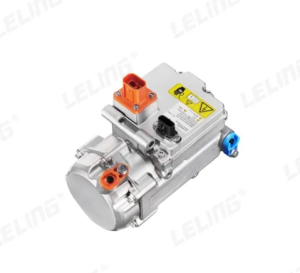Contact person: Mr. XIAOLIANG
Position:
Address: No.925 Yecheng Road, Jiading Industrial Zone
Country: China
Phone: 02159963595 - Mobi: 13052510862
R404a Scroll Compressor for Cold Chain Transportation
Price:
Optimized for Cold Chain Vehicles & Containers
The 34cc R404a scroll compressor for cold chain is specifically designed to meet the rigorous demands of mobile refrigeration systems. From refrigerated trucks and containers to portable medical storage, this model delivers stable, high-performance cooling under variable conditions.
Powered by R404a refrigerant, the 34CC model ensures precise low-temperature control, essential for maintaining product integrity during transport.
Key Features:
34CC Displacement – Ideal for medium to large refrigerated truck units
Broad Voltage Support – 12V to 800V, compatible with EVs, hybrids, and standard systems
Low Vibration, High Stability – Built for mobile environments and long routes
Smart Control Ready – Gear, PWM, and CAN interfaces for intelligent temperature control
Compact Structure – Saves space in dense equipment layouts
Tailored for Cold Chain Applications
Perfect for:
Refrigerated Trucks – Stable cooling for meat, seafood, dairy, pharmaceuticals
Cold Chain Containers – Integrated into shipping or rail-based refrigeration units
Mobile Medical Coolers – Reliable cooling for temperature-sensitive drugs and vaccines
Onboard Cooling Systems – EVs and specialty vehicles with compact thermal systems
General Steps and Key Points for Using Electric Scroll Compressors:
Preparation Before Installation:
1. Confirm Specification Matching: According to the refrigeration or heating requirements of the application scenario, select an appropriate electric scroll compressor with the right displacement (such as 14CC, 18CC, etc.), voltage (12V, 24V, etc.), and refrigeration capacity output range (0.8kW - 15kW). Ensure that it matches the requirements of the entire system, such as the thermal management system of new energy vehicles or the air-conditioning system of commercial vehicles.
2. Check Component Integrity: Before installation, carefully inspect the compressor, including key components such as the stationary scroll plate and the orbiting scroll plate, to ensure there is no damage, deformation, or foreign objects inside. Meanwhile, check whether the motor and connecting wires are at normal conditions.
3. Prepare Installation Tools and Materials: According to the installation requirements of the compressor, prepare corresponding tools, such as wrenches, screwdrivers, etc., as well as installation materials like sealing materials and refrigerant pipes.
Installation Process:
1. Positioning and Fixing: Install the electric scroll compressor at the designed position. Generally, it should be firmly installed to avoid vibration and displacement during operation. For vehicle applications, special brackets and shock-absorbing devices may be required for fixation.
2. Pipe Connection: Connect the refrigerant inlet and outlet pipes correctly according to the system design requirements. During the connection process, ensure that the pipe joints are well sealed to prevent refrigerant leakage. Usually, sealing gaskets and appropriate connection methods (such as welding, threaded connection, etc.) are used.
3. Electrical Connection: Connect the motor wires of the compressor to the power supply system. This requires strict operation according to the electrical wiring diagram to ensure that the wire connections are firm and the insulation is good. Meanwhile, pay attention to matching the voltage requirements to avoid compressor damage caused by incorrect voltage.
System Commissioning:
1. Initial Refrigerant Charging: After the system installation is completed, the refrigeration system needs to be charged with refrigerant. The charging amount should be determined according to the specifications of the compressor and the requirements of the system. Generally, it can refer to the equipment manual or relevant technical standards. During the charging process, pay attention to operational safety to avoid refrigerant leakage that may cause harm to human bodies and the environment.
2. Startup Check: After charging the refrigerant, start the compressor for a preliminary check. Observe whether the startup process of the compressor is smooth and whether there are any abnormal noises or vibrations. Meanwhile, check whether the current of the motor is within the normal range to ensure the normal startup of the compressor.
3. Performance Testing: By adjusting the control modes (such as gear, PWM, CAN, etc.), test the refrigeration or heating performance of the compressor under different working conditions. Temperature sensors and other devices can be used to monitor the temperature changes of the system to ensure that the compressor can achieve the expected refrigeration capacity or heating capacity output and meet the requirements of the application scenario.
Daily Use and Maintenance:
1. Normal Operation: In daily use, start or stop the compressor and adjust the intensity of refrigeration or heating according to actual needs through the control system (such as the air-conditioning control panel of a vehicle or the temperature controller of an energy storage system). During the operation process, avoid frequent start-stop operations to prevent affecting the service life of the compressor.
2. Regular Inspection and Maintenance: Regularly inspect the appearance of the compressor to check for signs of refrigerant leakage (such as oil stains), whether the connecting parts are loose, and the running condition of the motor. Meanwhile, according to the requirements of the equipment maintenance manual, regularly replace lubricating oil (if required) and filters and other wearing parts to ensure the efficient operation of the compressor.
3. Fault Handling: If any abnormalities are found during the use of the compressor, such as excessive noise, poor refrigeration or heating effects, motor failure, etc., stop using it immediately and follow the fault diagnosis process for inspection. Professional testing devices may be required to determine the cause of the fault, such as checking the electrical system, refrigerant pressure, sensors and other components, and then carry out corresponding repairs or replacements according to the fault situation.
SEND INQUIRY
Please fill in fully your information to send email
CATEGORY














 Agriculture
Agriculture